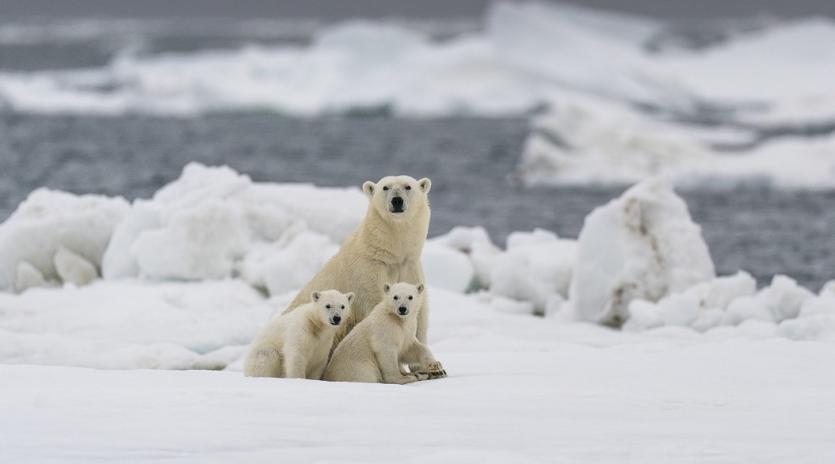A polar bear family at Svalbard in northern Norway, 10 July, 2020
Polar bears may face extinction by 2100, scientists warn
By Patryk Krych | The World Daily | JULY 21st 2020
For the first time, scientists have developed a prediction for when they think polar bears may face their extinction. The prediction is based on the current curve of climate-affecting carbon emissions – the main threat to the species’ existence.
A study was recently published in Nature Climate Change, exploring the manners in which polar bear populations may be affected by two varying greenhouse gas emission scenarios. According to the study, many polar bears may begin to experience failure in reproduction capabilities by as early as the year 2040. This is thought to be the first step towards their eventual extinction.
The study further shows that even if the current emission rates are slightly lessened, the polar bears would still end up experiencing reproductive failure by 2080. At the present rate, it is predicted that by the end of the century, polar bears’ last remaining appropriate habitat will be on the Queen Elizabeth Islands, in Canada’s Arctic North.
“It’s been clear for some time that polar bears are going to suffer under climate change,” said Péter Molnár, who lead the study, and is a biologist at the University of Toronto Scarborough. “But what was not fully clear was when we would expect major declines in the survival and reproduction of polar bears that could ultimately lead to their extirpation. We didn’t know whether that would happen early or later in this century.”
Molnár and his colleagues performed the study by estimating the maximum amounts by which a polar bear could get fat and thin, and then derived the total number of days they could go without food before both the adult and cub’s survivability rates saw a decline. This estimate was developed by modelling the animals’ energy usage.
At present, there are fewer than 26,000 polar bears left in the world, scientists estimate. The current pace of climate change has severely affected ice levels in their usual hunting grounds – ice they rely on for sustenance, as they hunt fish and seals through their breathing holes. If forced to migrate over to land, they wouldn’t be able to survive, given their instinctual hunting tactics. Ice levels continue to decrease yearly.






